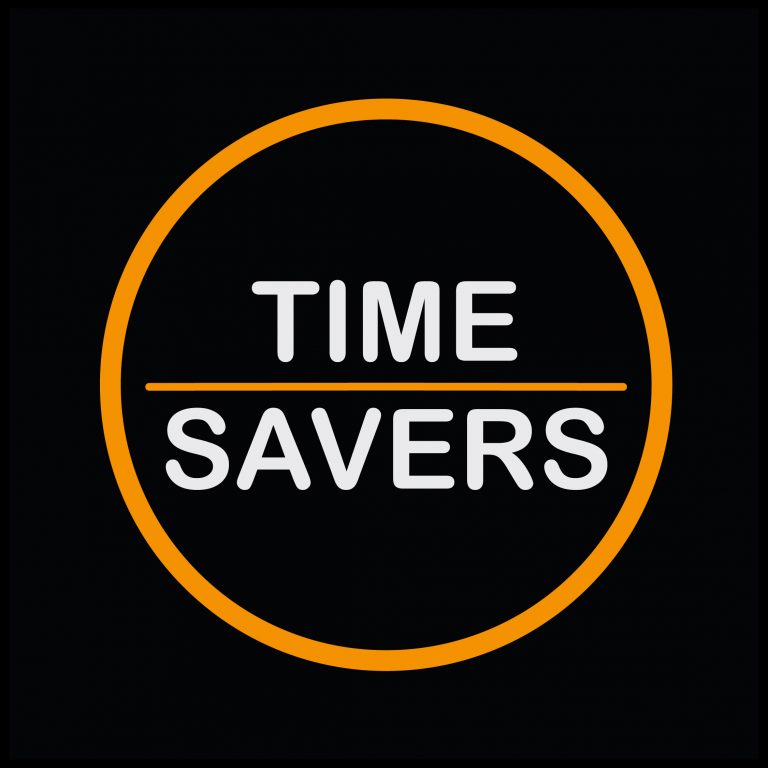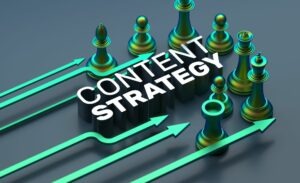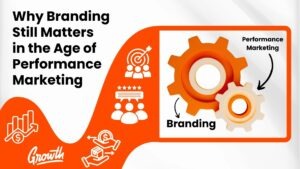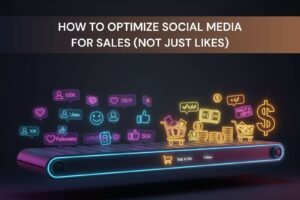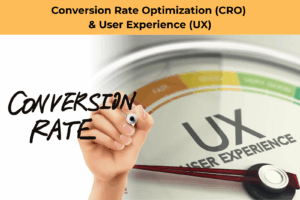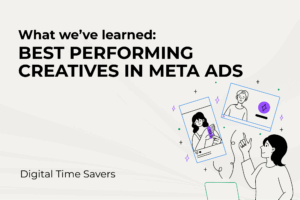Google Ads in 2025 feels like trying to drive a car that keeps upgrading itself while you’re on the highway. Just when you think you’ve figured out Smart Bidding, Google launches another AI feature that promises to “optimize everything automatically.”
But in 2025, the businesses crushing it on Google Ads aren’t the ones trying to outsmart the algorithm, they’re the ones who learned how to work with it.
If you’re still running campaigns like it’s 2020, you’re probably wondering why your costs keep climbing while your results stay flat. The good news? Once you understand how modern Google Ads works, it’s easier to get results than ever before.
This guide covers everything that’s important in 2025, not the stuff that worked three years ago, but what’s working right now.
In this guide, we’ll cover:
- How Google Ads has evolved in 2025 (and what that means for your campaigns)
- The campaign types that actually matter now (hint: Performance Max isn’t optional anymore)
- Step-by-step strategy for businesses that want results, not experiments
- Budget and bidding approaches that work with Google’s AI, not against it
- Common mistakes that are burning through budgets right now
Whether you’re launching your first campaign or optimizing existing ones, this is your roadmap to Google Ads that actually drives business growth in 2025.
Why Google Ads Still Dominates in 2025
Every marketing conference you go to, someone’s declaring Google Ads “dead” while simultaneously spending $50,000 a month on it. What’s the lesson? While everyone’s chasing the latest social media trends, Google is still where people go when they’re ready to buy something.
Think about your own behavior. When you need a plumber at 2 AM, you’re not scrolling TikTok hoping to find one. You’re Googling “emergency plumber near me” and clicking the first ad that looks legitimate.
That’s the difference between Google Ads and every other platform: intent. Facebook shows your ad to people who might be interested. Google shows your ad to people actively searching for what you sell.
So what’s actually different about Google Ads in 2025? Here’s a quick rundown:
It’s gotten smarter (and more automated): Google’s AI now handles bidding, audience targeting, and even ad creation in ways that would have seemed impossible five years ago. Smart Bidding automatically adjusts your bids hundreds of times per day based on device, location, time, and dozens of other signals. Performance Max campaigns can create ads, find audiences, and optimize placements across all of Google’s properties without you lifting a finger.
It’s everywhere now: Google Ads isn’t just those text ads at the top of search results anymore. Your campaigns can appear on YouTube videos, inside Gmail inboxes, on Google Maps when people search for local businesses, across millions of websites through the Display Network, and in Google’s Discover feed where people browse content. One campaign strategy can put your business in front of people across Google’s entire ecosystem.
Competition has intensified: More businesses are using Google Ads than ever, and they’re getting more sophisticated. Average cost-per-click has increased across most industries, and the businesses winning are the ones with better strategies, not just bigger budgets. You can’t just throw up some basic ads and expect results. You need to understand how modern campaigns work.
The opportunity is still massive but only if you know how to navigate these changes.
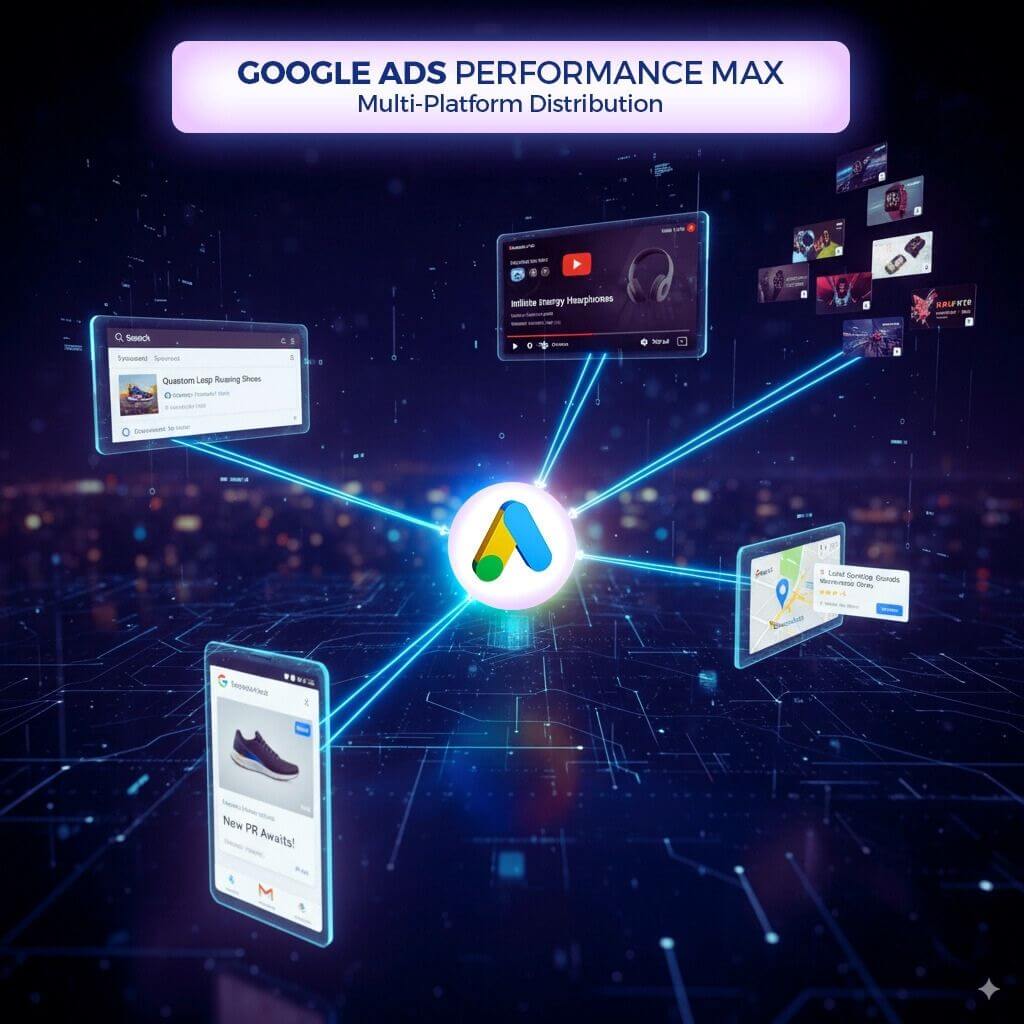
How Google Ads Works in 2025
The basic concept hasn’t changed…you bid on keywords, Google shows your ads to people, and you pay when someone clicks. It’s like an auction, except the auction happens thousands of times per second and you’re bidding against every other business trying to reach the same customers.
1. Campaign Types Are Smarter
But the execution has gotten way more complex (and powerful):
Campaign types have evolved beyond recognition. Remember when you had to choose between Search, Display, and Shopping campaigns and manually manage each one? Those days are mostly over.
- Performance Max (PMax) is Google’s attempt to make your life easier and their AI smarter. You give it your website, some images, and a budget, and it shows your ads everywhere: Search results, YouTube videos, Gmail, Google Maps, you name it. It sounds lazy, but when it works, it’s incredibly effective. When it doesn’t, it’s incredibly expensive.
- Search campaigns are still the bread and butter for most businesses. People type in what they want, your ad shows up, they click, they (hopefully) buy. The targeting has gotten smarter though. Google’s AI understands that someone searching for “comfortable work shoes” might also respond to ads for “professional footwear” or “all-day walking shoes.”
- YouTube ads have exploded because everyone’s watching videos on their phones. The targeting is insanely specific…you can show ads to people who watched cooking videos, live in Denver, and are planning a vacation.
- Smart Shopping is dead. Google killed it and folded everything into Performance Max. If you’re still running Smart Shopping campaigns, it’s time to upgrade.
2. Audience Targeting Has Gotten Precise
Google doesn’t just care about what people search for anymore. It understands what they’re interested in and when they’re ready to make a purchase.
Here’s how sophisticated the targeting has become:
- Intent signals drive everything. Google can tell when someone’s been researching running shoes for three weeks, comparing different brands, and reading reviews. That person is much more likely to buy than someone who just happened to click on your ad.
- Remarketing goes way beyond basic website visitors. You can now target people who watched most of your YouTube video, spent time on your pricing page, or engaged with your content but haven’t made a purchase yet.
- Life events targeting helps you reach people at the right moment. Google can identify when people are moving, getting married, starting businesses, or having babies based on their search patterns. If you sell moving supplies, you can reach people exactly when they’re planning their move.
- First-party data amplifies your reach. Upload your customer email list, and Google finds similar people who share characteristics with your best customers. It’s like expanding your ideal customer base to people you never would have found otherwise.
The businesses succeeding on Google Ads today combine keyword targeting with audience insights to reach the right people at the right time.
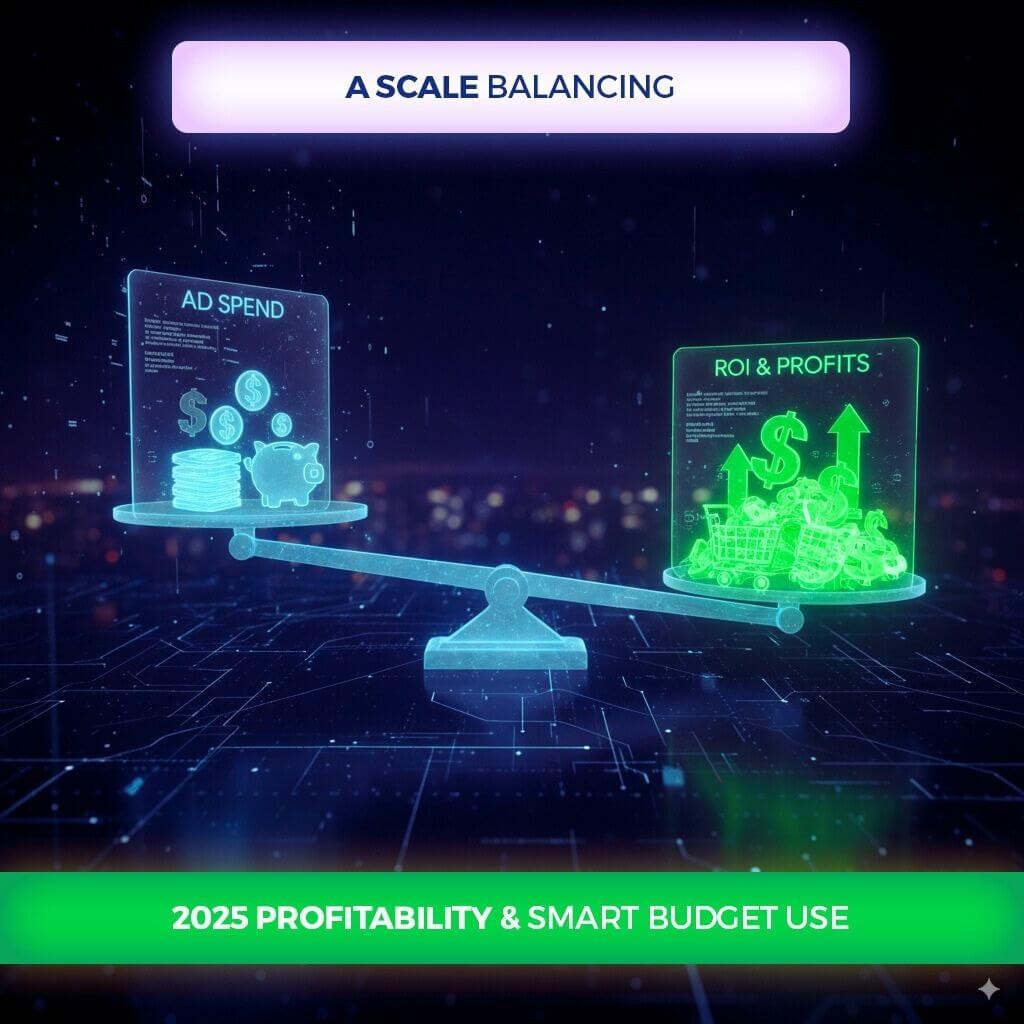
Key Trends Shaping Google Ads in 2025
AI & Automation Are Running the Show
Google’s AI has taken over jobs that used to require hours of manual work. It automatically adjusts your bids based on weather, device type, time of day, and hundreds of other factors you’d never think to track manually.
Smart Bidding strategies like Target CPA and Target ROAS now outperform manual bidding in most cases. Performance Max campaigns can create ads, find audiences, and optimize placements without you touching anything.
First-Party Data Wins
Your new role isn’t campaign manager, it’s data feeder. The algorithm is only as good as what you give it. Feed it high-quality creative, clear conversion tracking, and enough budget to learn, and it’ll find customers you never knew existed. Starve it of data or constantly interfere with its learning, and you’ll get mediocre results.
First-Party Data Has Become Your Competitive Advantage
With third-party cookies disappearing and iOS making tracking harder, the businesses with their own customer data are dominating. Your email list, website behavior data, and purchase history are now more valuable than any audience you can buy.
Companies using Google Tag Manager properly, implementing consent mode, and syncing their CRM data are seeing dramatically better performance than those relying on basic tracking.
Creative Quality Determines Everything
Keywords used to be king. Now? Your images, videos, and ad copy are what make or break campaigns. Google’s AI can find the right people, but it can’t make them care about boring ads.
High-performing creatives get better click-through rates, which leads to lower costs and better ad positions. It’s a compounding effect, good creatives makes everything else work better.
How to Set Up a Winning Campaign in 2025
Step 1: Get Crystal Clear on What Success Looks Like
Google Ads will ask you to pick a goal when setting up your campaign. Choose the one that matches what you actually want:
Leads: Perfect for service businesses, B2B companies, or anyone collecting contact information before sales conversations.
Sales: Ideal for e-commerce businesses or companies that complete transactions online.
Website traffic: Good for content-driven businesses or when you’re testing new markets.
Awareness: Best for brand campaigns or reaching new audiences with your message.
Your choice here determines which bidding strategies Google will recommend and how the AI optimizes your campaigns. Don’t overthink it. Pick the one that matches your primary business objective.
Step 2: Choose Your Campaign Type Strategically
- Performance Max works best when you have multiple products, good creative assets, and want Google to find customers across all their properties. It’s particularly powerful for e-commerce businesses with decent profit margins.
- Search campaigns are your bread and butter for capturing high-intent traffic. Someone searching “emergency plumber Chicago” is ready to buy right now. Don’t overthink these…focus on relevant keywords and compelling ad copy.
- YouTube campaigns excel at introducing your brand to people who don’t know they need you yet. Great for complex products that benefit from demonstration or emotional storytelling.
Step 3: Get Your Tracking Right (This Is Non-Negotiable)
If you can’t track conversions accurately, you’re flying blind. Google’s AI needs conversion data to optimize your campaigns effectively.
Set up Google Tag Manager properly, implement Enhanced Conversions for better attribution, and link Google Analytics 4 with your Ads account. This is the foundation of everything else.
Step 4: Create Ads That Convert
Responsive Search Ads (RSAs) need variety to work. Don’t just write 15 variations of the same headline, give Google different angles, benefits, and calls-to-action to test.
Include video assets whenever possible. Even simple product videos or customer testimonials can dramatically improve performance.
Use every ad extension available, sitelinks, callouts, structured snippets. They take up more space on the search results page and give you more chances to communicate value.
Step 5: Launch Smart, Then Optimize Relentlessly
Give your campaigns 7-10 days to gather data before making major changes. Google’s AI needs time to learn what works.
Check your search terms report daily to see what queries are actually triggering your ads. Add irrelevant terms as negative keywords to avoid wasted spend.
Adjust budgets based on performance, not gut feelings. If a campaign is profitable, feed it more budget. If it’s not, figure out why before throwing more money at it.
Budgeting for Google Ads in 2025
Budget ranges vary wildly based on your industry and how much a customer is worth to you:
Small local businesses: $1,000–$3,000/month. Higher cost-per-click but fewer clicks needed since customer values are typically higher.
E-commerce businesses: $2,000–$10,000/month. Depends on your profit margins and average order value. More volume needed but lower individual customer values.
B2B and SaaS companies: $3,000–$20,000+/month. Expensive clicks but high lifetime customer values make the math work.
The real rule: start with what you can afford to lose while learning. Your first month will probably be expensive education. Once you dial in what works, you can scale aggressively.
ROAS benchmarks to aim for:
- 2x ROAS = Breaking even (might be profitable depending on your margins)
- 3x-4x ROAS = Healthy and scalable for most businesses
- 5x+ ROAS = Excellent performance (celebrate but don’t expect it consistently)
Remember: ROAS without knowing your profit margins is meaningless. A 2x ROAS with 80% margins makes you rich. A 4x ROAS with 15% margins might lose money.
Common Mistakes That Are Burning Through Your Budget Right Now
- Ignoring the search terms report. You’re probably paying for clicks from people searching for things you don’t sell. Check daily or weekly and add irrelevant terms as negative keywords, or you’ll keep paying for “free plumbing advice” when you’re trying to sell plumbing services.
- Running broad match keywords without negative keywords. Broad match can work well in 2025, but only if you’re actively managing it. Without negative keywords, you’ll get clicks from every loosely related search under the sun.
- Treating campaigns like a “set and forget” investment. Google Ads requires ongoing optimization. Campaigns that perform well this month might crater next month if you’re not monitoring performance, adding negative keywords, and refreshing creative.
- Using terrible creative in Performance Max. PMax campaigns live or die by your images, videos, and ad copy. Stock photos and generic headlines will get you generic results. Google’s AI can find the right people, but it can’t make them care about boring ads.
- Not tracking conversions properly. If Google doesn’t know what a successful outcome looks like, it can’t optimize for it. Running campaigns without conversion tracking is like driving blindfolded and hoping you end up somewhere useful.
- Not having clear conversion goals. Are you optimizing for phone calls, form fills, purchases, or email signups? If you haven’t defined what success looks like, Google’s AI will optimize for whatever it thinks is best, which might not align with what actually makes you money.
What Separates Winning Campaigns from Money Pits
- Strong creative assets that actually stop the scroll. Your images, videos, and ad copy need to capture attention in a split second. User-generated content often outperforms polished product shots because it looks authentic. Test different emotional angles. Sometimes highlighting a problem works better than promoting benefits.
- Crystal clear goals with bulletproof tracking. If you can’t accurately measure what matters, you can’t improve it. Set up conversion tracking that captures your actual business objectives, not just website visits. Google’s AI optimizes for what you tell it matters most.
- Sufficient data volume for machine learning to work. Google’s algorithms need at least 15-20 conversions per month to optimize effectively. If you’re not hitting that threshold, your campaigns will struggle to improve. Sometimes that means broadening your targeting or increasing budget temporarily.
- Smart audience layering beyond basic demographics. Combine your remarketing lists with in-market audiences, or layer life events targeting location-based audiences. The businesses getting the best results are using 2-3 targeting methods together, not relying on one approach.
- Consistent optimization without constant tinkering. Check performance weekly, not daily. Make data-driven adjustments to budgets, negative keywords, and underperforming ad groups. But resist the urge to change everything every few days…you’ll prevent the algorithm from learning what actually works.
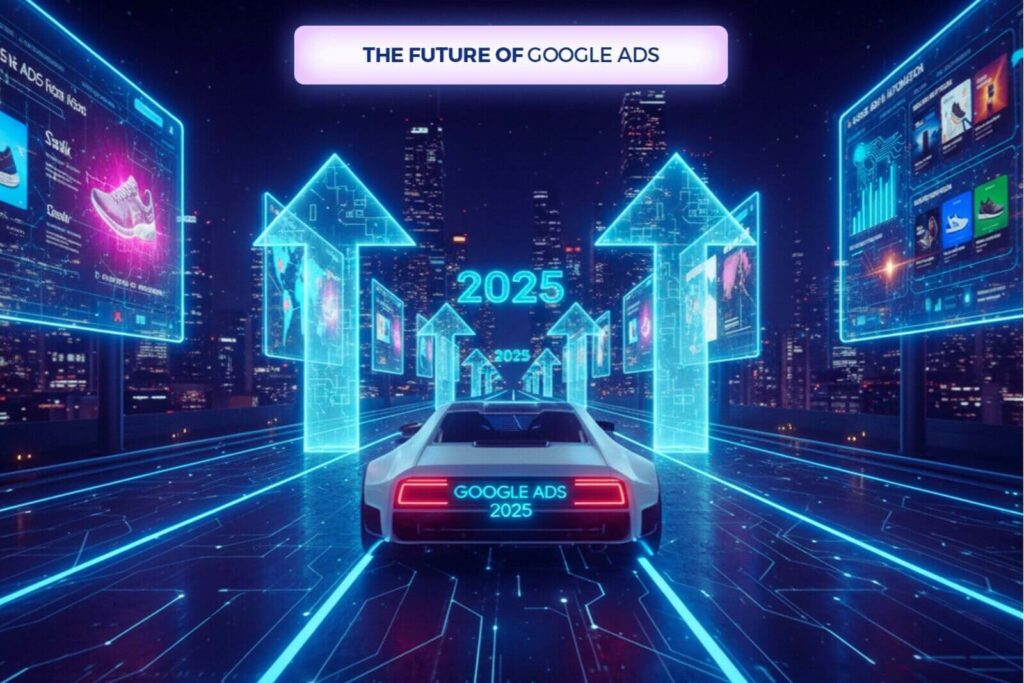
Your Google Ads Game Plan for 2025
You’ve got the strategy, you understand the platform changes, and you know what mistakes to avoid. Now here’s how to actually put it all together and start seeing results:
- Start with Performance Max, but don’t abandon Search campaigns. PMax is powerful for discovery and scale, but Search campaigns still dominate for high-intent keywords. Use both strategically…Search for your money keywords, PMax for everything else.
- Video content isn’t optional anymore. It doesn’t need to be professionally produced. Some of the best-performing ads are simple phone recordings showing your product in action or customers explaining why they love it. Authenticity beats production value.
- Build and own your customer data. Email lists, website behavior tracking, and CRM data are your competitive advantages in a privacy-first world. The more first-party data you have, the better your targeting becomes and the less dependent you are on platform changes.
- Think beyond last-click attribution. Someone might see your YouTube ad, research on Google, check reviews, then buy a week later. Track the full customer journey to understand what’s actually driving sales, not just what gets credit for the final click.
- Embrace the test-and-learn cycle. Google Ads rewards experimentation. Test new audiences, creative angles, and campaign types regularly. What worked last quarter might not work this quarter…staying ahead means constantly evolving.
Google Ads in 2025 isn’t about mastering every feature or outsmarting the algorithm. It’s about feeding Google’s AI the right data, creative, and objectives, then letting it do what it does best: find customers who are ready to buy what you’re selling.
Ready to Get Started with Google Ads in 2025?
Download our free Google Ads 2025 Checklist to make sure you’re set up for success—from setup to optimization.
👉 [Grab the Checklist – It’s Free]
Everything you need to launch and scale profitable campaigns this year—no overcomplicated strategies, just what actually works.
Is Google Ads still worth it in 2025?
Yes. It’s still one of the best platforms for targeting high-intent users who are actively searching for what you sell
What is the best Google Ads campaign type in 2025?
Performance Max is best for ecommerce and broad reach. Search campaigns are best for precise targeting of high-intent keywords.
How much should I spend on Google Ads?
Start with what you can afford to lose while learning ($500–$1,000/month), then scale based on performance and profitability.
How long before I see results?
Most campaigns need 7–10 days for Google’s AI to learn. Expect to see meaningful performance data after 3–4 weeks of consistent optimization.
Do I need video ads in 2025?
Yes, especially for Performance Max campaigns and YouTube advertising. Even simple phone-recorded videos can be highly effective.

